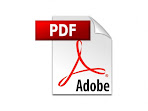Part 26
Article: Biotechnology My Blog Title: The world, from the past to the present, retold from the timelines.
2023: [10.23] The first successful transplant of a functional cryopreserved mammalian kidney was reported. The study demonstrated a "nano-warming" technique for vitrification for up-to-100 days preservation of transplant organs. Sourced from [frontiersin.org] titled: “Supercooling: a promising technique for prolonged preservation in solid organ transplantation, and early perspectives in vascularized composite allografts.” METHODS: Literature on Pubmed and Google Scholar databases was reviewed by using the keywords and Boolean operators “Organ AND (Supercooling OR Subzero)”. The search was then repeated by replacing “Organ” with “Liver”, “Kidney”, “Heart”, “Lung”, “Skin”, “Adipo*”, “Bone”, “Nerve” and “VCA” successively. Additionally, reference lists were manually checked to identify other relevant articles. Non-original articles and articles in languages other than English and French were excluded. LITERATURE SCREENING RESULTS: The search strategy retrieved 339 total results. Title and abstract screening resulted in, including 45 results, covering liver, kidney, heart, lung, skin, fat/connective tissue, nerve, bone, and VCA ‘Vascularized Composite Allotransplantation’. Table 1 succinctly or briefly displayed the main results of the literature review, summarizing citations relevant to each organ and tissue supercooling. SUPERCOOLING PRINCIPLES TO EXTEND ORGAN PRESERVATION: Mitochondria play a critical role in the generation of metabolic energy in eukaryotic cells. They are responsible for most of the useful energy derived from the breakdown of carbohydrates and fatty acids, which is converted to adenosine triphosphate (ATP) by the process of oxidative phosphorylation. Oxidative phosphorylation (OXPHOS) consumes oxygen to produce ATP. For every cell in your body, the source of energy that keeps everything going is called ATP. Adenosine triphosphate (ATP) is the biochemical way to store and use energy. ATP is the most abundant energy-carrying molecule in your body. It harnesses the chemical energy found in food molecules and then releases it to fuel the work in the cell. ATP is a common currency for the cells in your body. The food you eat is digested into small subunits of macronutrients. The carbohydrates in your diet are all converted to a simple sugar (glucose). That first needs to be converted to ATP (the energy form that will work in the cell). Organ mitochondrial oxidative metabolism had been described to be reduced by half for every 10°C drop in temperature. Static cold storage (SCS) had utilized these principles for decades by storing organs at 4°C, mostly on ice. However, if this process allowed for decreasing ischemic injuries, storage at 4°C did not completely arrest cellular metabolism and limited the total preservation duration. Recent developments in machine-perfusion techniques had aimed to decrease these injuries by oxygenating the organ while being cooled: Hypothermic Oxygenated Machine Perfusion (HMP) had shown interesting results in liver and kidney transplantation. Sub-zero temperatures had the potential to further decrease cell metabolism. Intracellular ice formation was one of the main causes of cell death during sub-zero preservation. Ice formation was a stochastic phenomenon and increased in lower temperatures and larger tissue volumes. Freezing comprises two phenomena, namely ice nucleation, which consists of the random formation of ice crystals from the liquid, and solidification, which is the formation of ice due to growth of these nuclei. Ice nucleation is an activated process and therefore it is stochastic. Different approaches coexisted in these temperature ranges. Partial freezing consisted of using ice nucleators to control and limit ice formation and cryoprotective agents (CPAs) to maintain an unfrozen liquid phase. Cryoprotective agents (CPAs) are used to eliminate ice formation when cooling organs to cryogenic temperatures. Organs can be cryopreserved without ice formation if there is no limit to the amount of CPA that can be used, but toxicity of CPAs limits the amount that can be used. This preservation method allowed for storage at -10°C to -15°C and had shown positive outcomes in livers. Alternatively, Vitrification was a technique that involved rapidly cooling organs to achieve a stable, ice-free state with a glass-like consistency. However, the ice-nucleation issue arised when these organs were warmed back to normal temperatures. The formation of ice crystals had been a major limitation during vitrified organ recovery if the rewarming process was too slow. In addition, another risk was of cracking due to thermal stress if the rewarming was not done uniformly. Thermal stress is induced in a body when the temperature of the body is raised or lowered and the body is not allowed to expand or contract freely. Thermal stress includes both heat and cold stress.
SOURCE COMPOSITION
PC Software
APP: AppStore PlayStore
In-text voice
[Read Aloud AI - Text to Speech
Mapache Dev]
[aiReader: AI Text to Speech]
[TTS Reader - Text To Speech withtheflow01]
MP4 to MP3
[Unlimited MP3 Audio Merger
Ambition Technologies]
MP3 tag and album art maker
[MusicBrainz Picard]
[MP3TAG The universal tag editor.]
MP3 volume-increase conversion
[MP3 Audio Gain and Equalizer]
[Super Sound Editor: Music Audio Editor, MP3 Cutter]
Photo maker for album art cover
[InCollage - Collage Maker Pic Collage,Photo Editor,
Grid SHANTANU PTE. LTD.]
[Social Media Post Maker stylish app world Art & Design]
[Compress Image Size in KB&MB Zilory app]
Music Sources and Titles: Pixabay
[Content composition of “In-Brief Archives Facebook Page” and of my blogger page “www.ilovemytimeoranothertimeofyours.blogspot.com” in sound and music does not represent the pictures, videos and text contents.] [Music volume is increased if deviated from the actual files.]
[piano-chill-ambient-125800]
[inspire-cinematic-229758]
Picture sources: Peakpx.com and Pexels, Pixabay in PowerDirector and other websites:
1:https://i.ytimg.com/vi/RfA_7dUAEmE/maxresdefault.jpg
3:https://upload.wikimedia.org/wikipedia/commons/c/c1/Google_Scholar_home_page.png
4:https://care.pressreader.com/hc/article_attachments/21642508467732
5:https://pbs.twimg.com/media/F0V4S36WcAEXoFQ?format=jpg&name=large
12:https://knowablemagazine.org/docserver/fulltext/10.1146/knowable-102323-2/i-eukaryotic-cell.png
14:https://journals.plos.org/plosbiology/article/figures?id=10.1371/journal.pbio.3000095
15:https://cdn1.byjus.com/wp-content/uploads/2019/04/Oxidative-Phosphorylation.png
19:https://www.gestationaldiabetes.co.uk/wp-content/uploads/2016/06/Macronutrients.jpg
22:https://www.animalspot.net/wp-content/uploads/2023/01/Animals-that-Hibernate.jpg
23:https://www.psmarketresearch.com/blog_img/Organ-Preservation-Market.jpg
24:https://www.infiniumglobalresearch.com/cdnimg/healthcare/global-organ-preservation-market.jpg
25:https://www.acc.org//-/media/Non-Clinical/Images/2025/02/CARDIOLOGY/FoHF-Fig1.png
28:https://ars.els-cdn.com/content/image/1-s2.0-S1743919120303563-gr1_lrg.jpg
35:https://ars.els-cdn.com/content/image/1-s2.0-S0001868619304701-ga1_lrg.jpg
41:https://i0.wp.com/134.209.46.227/wp-content/uploads/2020/08/vitrification15.jpg?resize=960%2C720
42:https://ars.els-cdn.com/content/image/1-s2.0-S2095809924007379-gr8_lrg.jpg
43:https://i0.wp.com/134.209.46.227/wp-content/uploads/2020/08/Figure-2a.jpg?resize=960%2C720
44:https://i0.wp.com/134.209.46.227/wp-content/uploads/2020/08/Figure-2b.jpg?resize=960%2C720
45:https://i0.wp.com/134.209.46.227/wp-content/uploads/2020/08/Figure-7.jpg?resize=960%2C720
46:https://ars.els-cdn.com/content/image/1-s2.0-S1742706125003320-ga1_lrg.jpg
47:https://ars.els-cdn.com/content/image/1-s2.0-S1742706122007140-gr1.jpg
49:https://europepmc.org/article/med/28251904
Video Sources: Pexels and Pixabay in PowerDirector and other websites:
50:https://www.pond5.com/stock-footage/item/103657936-pub-med-word-cloud-animated-isolated
53:https://www.pond5.com/stock-footage/item/127093534-mitochondria-cell-organelle-produces-energy
54:https://www.pond5.com/stock-footage/item/104492033-inside-mitochondrium-organelles
55:https://www.pond5.com/stock-footage/item/277294658-animal-cellcellular-organelles
56:https://www.pond5.com/stock-footage/item/282126703-cellsorganelles-and-organ-system
57:https://www.pond5.com/stock-footage/item/277294935-plant-cellscellular-organelles
59:https://www.pond5.com/stock-footage/item/258331029-eukaryote-or-eukaryotic-cell
60:https://www.pond5.com/stock-footage/item/258671724-mitochondria-cell
63:https://www.pond5.com/stock-footage/item/70364608-active-transport-human-cell
64:https://www.pond5.com/stock-footage/item/70364485-cell-membrane
65:https://www.pond5.com/stock-footage/item/70363066-active-transport-human-cell
66:https://www.pond5.com/stock-footage/item/309527931-fun-3d-cartoon-mitochondria-pastries-alpha
67:https://www.pond5.com/stock-footage/item/309527814-fun-3d-cartoon-mitochondria-fruits-alpha
68:https://www.pond5.com/stock-footage/item/309527578-fun-3d-cartoon-mitochondria-beach-bag-alpha
69:https://www.pond5.com/stock-footage/item/309053524-human-body-metabolism
70:https://www.pond5.com/stock-footage/item/139287339-mitochondria-floating-black-background-3d-render
72:https://www.pond5.com/stock-footage/item/309528050-fun-3d-cartoon-mitochondria-vegetables-alpha
73:https://www.pond5.com/stock-footage/item/309527838-fun-3d-cartoon-mitochondria-money-alpha
76:https://www.pond5.com/stock-footage/item/244529124-healthy-insulin-and-glucose-cellular-binding
83:https://www.pond5.com/stock-footage/item/229870799-horses-running-winter-field-snowy-iceland-nature
86:https://www.pond5.com/stock-footage/item/46054062-cells-blood-vessel
87:https://www.pond5.com/stock-footage/item/45293037-3d-cells-artery
91:https://www.pond5.com/stock-footage/item/46052990-cells-capillary
92:https://www.pond5.com/stock-footage/item/78074176-capillary-and-cells-close
93:https://www.pond5.com/stock-footage/item/44518780-pancreas-fat-cell
94:https://www.pond5.com/stock-footage/item/49174311-cell-vein-human-cell-andvein
95:https://www.pond5.com/stock-footage/item/44334791-cells-capillary
96:https://www.pond5.com/stock-footage/item/41041244-cells-multiplying
100:https://www.pond5.com/stock-footage/item/94670302-ice-snow-crystal-macro-shot-4k-time-lapse
103:https://www.pond5.com/stock-footage/item/163872379-christmas-composition-wild-berries-close
107:https://www.pond5.com/stock-footage/item/260415640-cryogenic-reaction
108:https://www.pond5.com/stock-footage/item/103307037-futuristic-scientific-cryogenic-machine-tubes
109:https://www.pond5.com/stock-footage/item/70898565-preparation-cells-cryogenic-preservation
110:https://www.pond5.com/stock-footage/item/121985725-frozen-stem-cells-get-out-nitrogen
111:https://www.pond5.com/stock-footage/item/121985695-stem-cell-frozen
112:https://www.pond5.com/stock-footage/item/124986079-procedure-placing-cryoprotectant-petri-dish
114:https://www.pond5.com/stock-footage/item/98547733-liquid-nitrogen-containers
115:https://www.pond5.com/stock-footage/item/93517945-huge-tanks-cryopreservation-center
116:https://www.pond5.com/stock-footage/item/142438898-pouring-liquid-nitrogen-container-semen-samples
117:https://www.pond5.com/stock-footage/item/70897872-filling-styrofoam-box-liquid-nitrogen
119:https://www.pond5.com/stock-footage/item/52993699-two-thermometers
Screen recorded on 16 June 2025 from the websites:
120:https://pubmed.ncbi.nlm.nih.gov/?term=Organ%20AND%20(Supercooling%20OR%20Subzero)&timeline=expanded
122:https://pmc.ncbi.nlm.nih.gov/articles/PMC11052586/
Consulted References:
Refer to Part 3 for all consolidated references for all parts.



Comments
Post a Comment